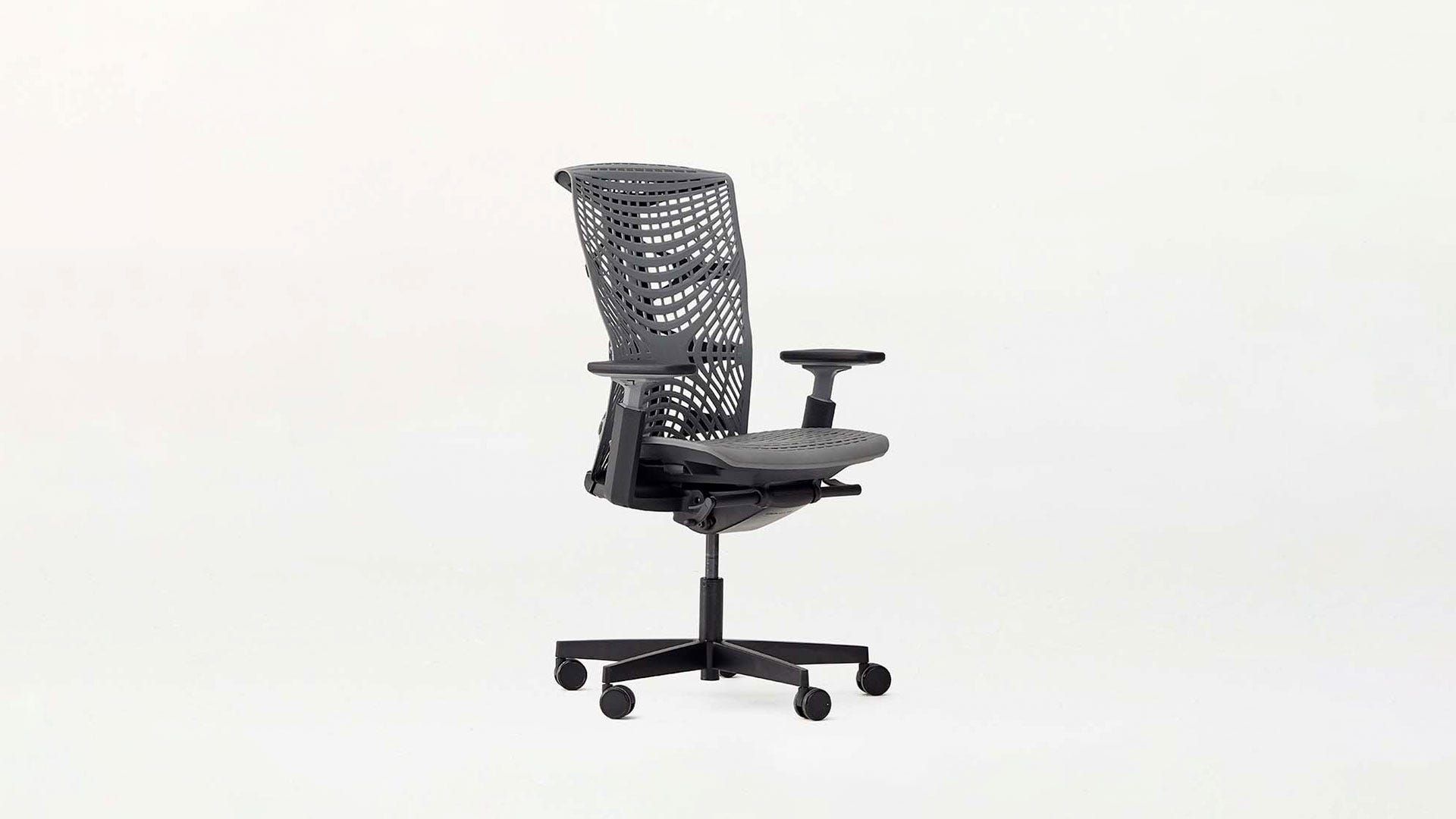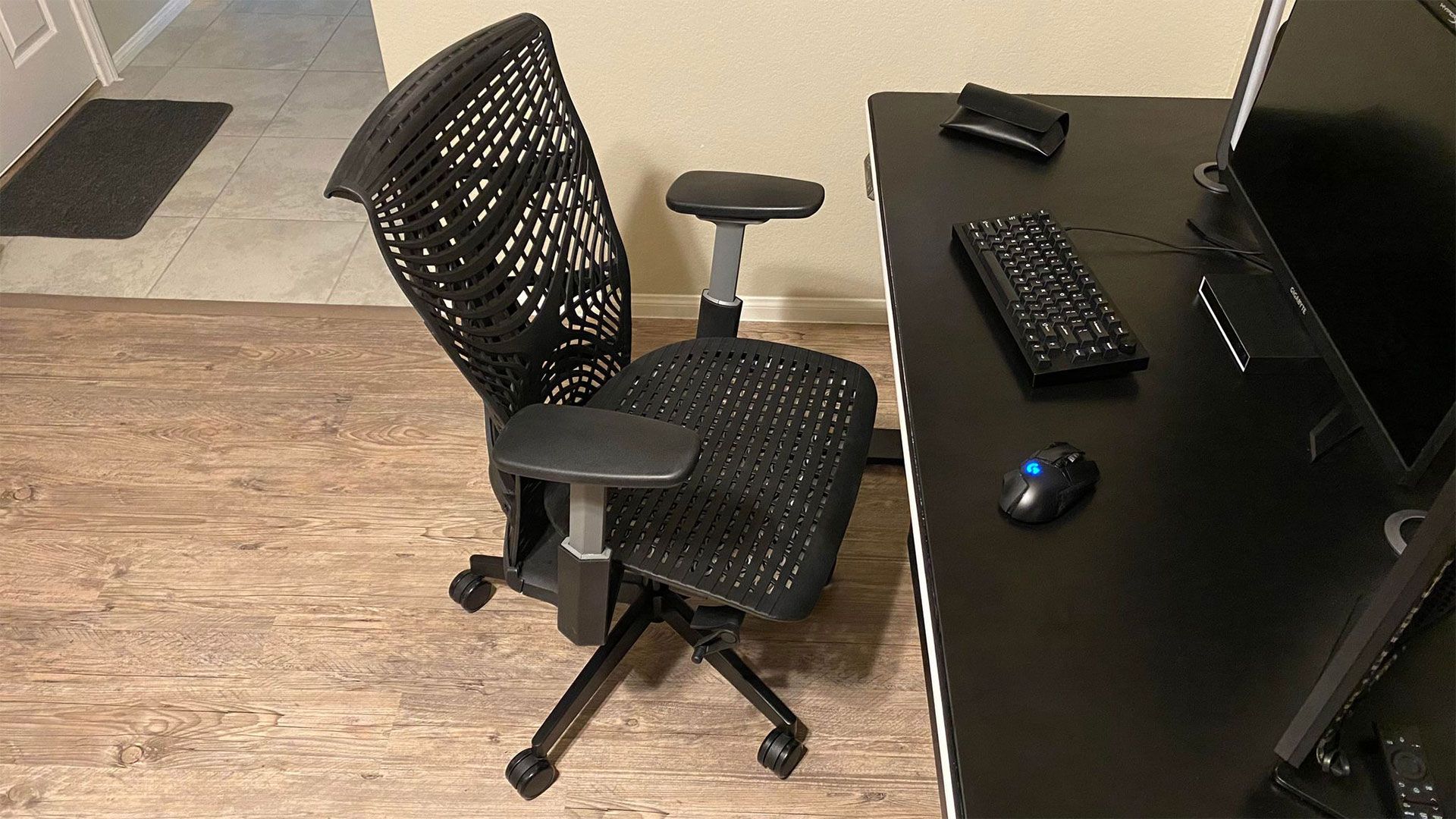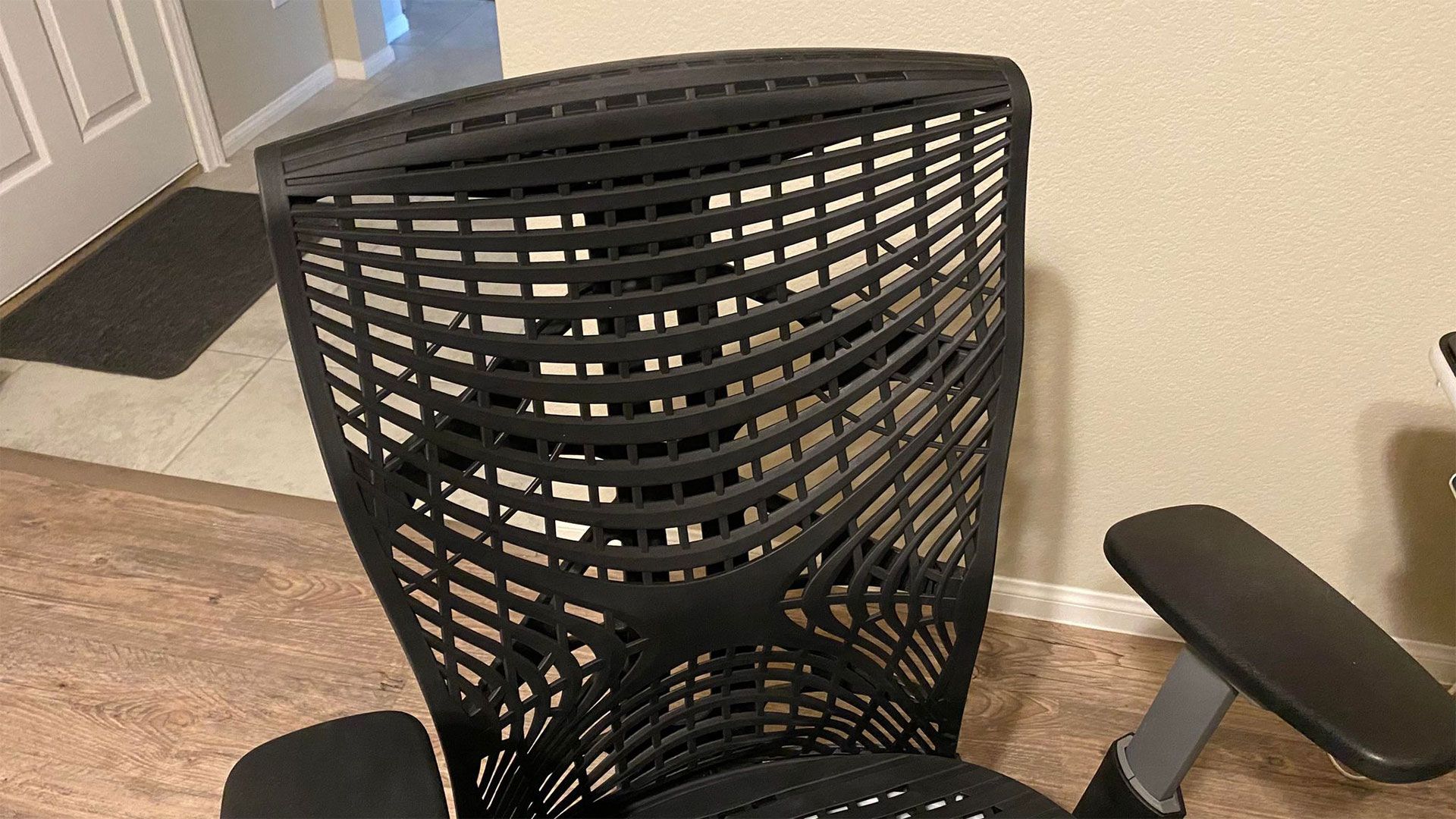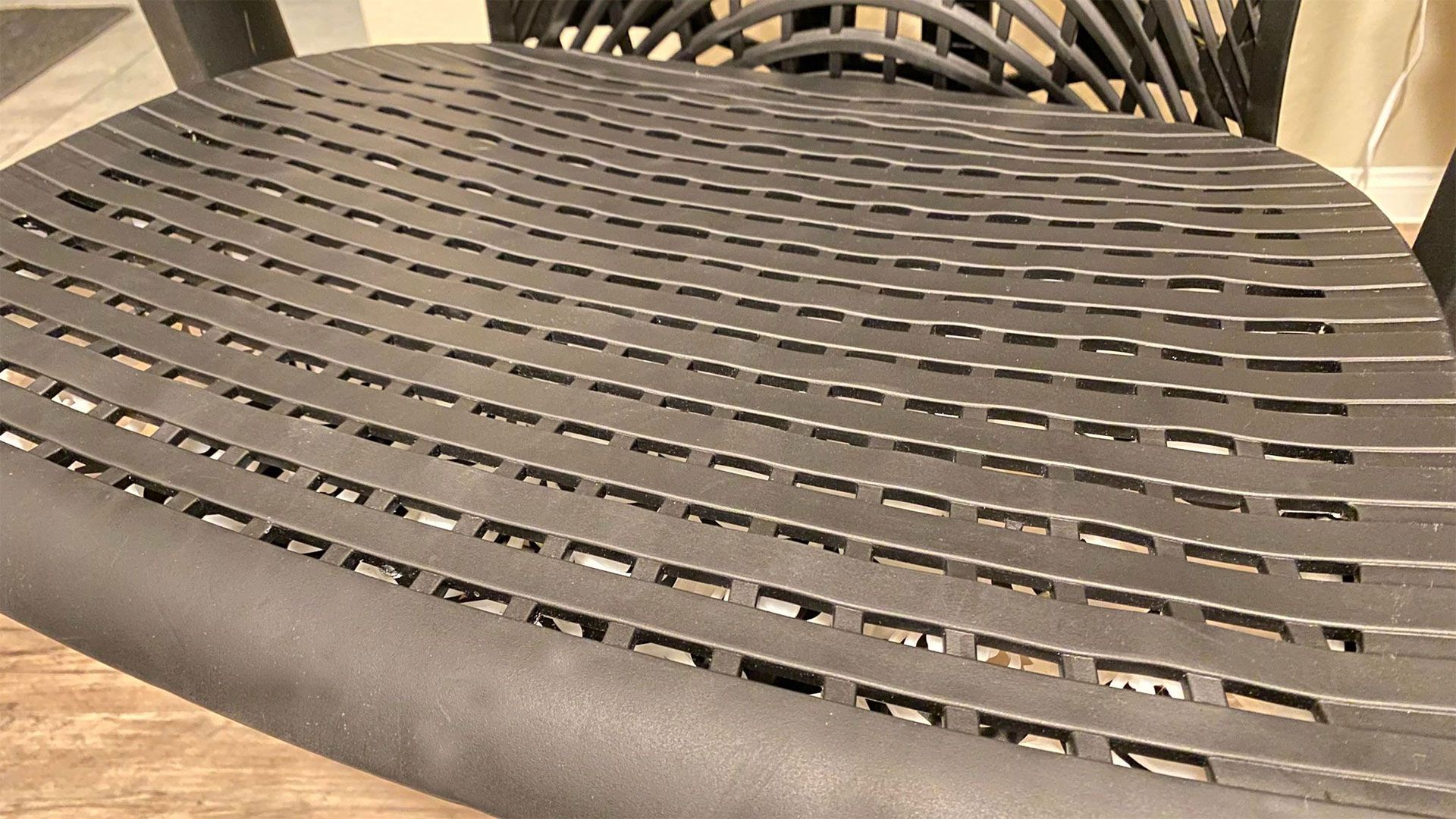Quick Links
Key Takeaways
- The Autonomous ErgoChair Plus may not have the most appealing design, but its comfort and durability make up for it.
- The chair's thermoplastic elastomer material looks rigid, but it actually provides excellent support and flexibility, conforming to the user.
- While the ErgoChair Plus lacks some advanced features, its adjustable armrests, back tilt, tension, and seat height make it customizable for individual needs.
The Autonomous ErgoChair Plus will be tough to look at for some, but the comfort it provides is worth throwing off your office aesthetic. It's not the most appealing design, and it's a relatively simple build, but the ErgoChair Plus is an office space must that could benefit from a few adjustments.
While putting together the Autonomous ErgoChair, I wasn't keen on switching from the $500 gaming chair I had been using. The pale lime and black motif of the flashier chair was far more appealing than the matte black of Autonomous' more practical design. However, comfort trumps aesthetics, and despite how uncomfortable I thought the ErgoChair Plus looked, my back needed a change.
There's something about the ErgoChair's design that's marginally unappealing, but it all plays into the overall feel when you sit. The thermoplastic elastomer (TPE) it's made out of looks stiff and rigid. It's quite the opposite, though, and coupled with the frameless design, the ErgoChair Plus wound up being one of the few chairs I've tested that conformed to me. Despite being designated "plus," the features are pretty standard, which may not sit well with a $399 price tag.
Just one or two more advanced features would elevate the Autonomous ErgoChair Plus even further. Otherwise, it's a very comfortable option that office workers should consider. It may have an unconventional design, but that ultimately plays into its many benefits.


Autonomous ErgoChair Plus
The Autonomous ErgoChair Plus features a frameless construction with adaptive spinal support and a weight capacity of 300lbs.
- Brand
- Autonomous
- Adjustable Arms
- 7 to 11in (17.8 x 27.9cm)
- Maximum Load Weight
- 300lbs
- Colors
- Multiple
- Seat height
- 17 to 21in (43.2 x 53.3cm)
- Overall dimensions
- 28 x 28 x 40 to 44in (71.1 x 71.1 x 101.6 to 111.8cm)
- Tilt range
- 25 degrees
- Adjustable parts
- Armrest, back tilt angle, back tilt tension, seat height
- Increases airflow
- Even weight distribution
- Very durable construction
- Somewhat unappealing design
- Lacking some adjustments
- Slightly expensive
Design: Looks Aren't Everything
Admittedly, I may have unfairly judged the look of the ErgoChair Plus when I first unpacked it. It has such a distinct design, one that could trigger discomfort for you. For me, it wasn't just the holes in the backing, which we'll get to in a minute. It was the look of the TPE material.
I'm used to leather chairs, so the plastic-like appearance of the chair's construction immediately looked stiff and uncomfortable. It's a very flat black, and there's no framing or etching to add a little character. Most of that winds up working in favor of the Autonomous ergonomic office chair. A little shine to the black or even an option for more colors beyond the black or light grey TPE (which can come with an optional powder blue mesh cover) would have been great.
It is clear that Autonomous is going for functionality over style, which is a stark contrast to the gaming chairs I've bounced between over the years. While I always appreciate color options, I can overlook the lack of variety when considering just how comfortable the chair is.
Thermoplastic Elastomer Is the Key to Comfort
I scoffed at the look of the TPE and ridiculed how unforgiving it looked. There was no way it would feel good after just a few minutes of sitting, I told myself. I'm happy to say I was wrong. TPE is far more malleable than it appears, and the moment I sat down, I could feel it contouring around my back.
Helping the chair's pliability is a lack of frames. It really lets the back and seat move as they need, catering to whoever sits in the ergonomic chair (up to the 300lb limit). When I stretch after a few hours of sitting still, the chair moves with me without resistance. But there's also enough support that it doesn't give way under me at all.
I've used the chair every day for over a month, and it feels just as sturdy and comfortable as it did on day one. The pleather of gaming chairs and the metal frame construction aren't quite as durable. And maybe most importantly, on hotter days, that unusual design of the ErgoChair's back allows for steady airflow. I don't get as warm as I used to in the confines of other materials and designs. Air can move unfettered for constant cooling circulation.
Springs Add Stability and Cushioning
The seat of the ErgoChair is another unique feature that pays off. Think of the science behind a mattress, just condensed down to the size of a standard office chair. Unlike foam, which is common even in higher-priced gaming and office chairs, the springs push back against you to prevent a dip on either side.
I frequently suffered from lower back and tailbone pain in my other chair. The ErgoChair Plus has virtually cured my ails, and I'm really in it for more hours than I had been with my previous chair. From what I can tell, there's been no shift in how the springs are sitting. I suspect that foam cushions would have sunk a little by now, causing an uneven distribution of pressure in my lower body.
Lacking Advanced Features
There are four adjustments that you can make to the ErgoChair Plus. The armrests can be raised or lowered, the back tilts back up to 25 degrees, the back tilt tension can be increased or decreased, and the seat can raise from 17 to 21 inches. They're all pretty standard on most office chairs, but for the price of the ErgoChair Plus, I would have appreciated a few more.
For just $50 more, the ErgoChair Pro adds seat tilt and a headrest, the latter of which is very noticeably missing. Then again, the Pro does seem to lose the springs, which is one of my favorite features of the Plus.
It's a balancing act of finding what suits you best. As it stands, I'm missing some of those extra adjustments, but not enough to give up some of the elements of the ErgoChair Plus.
Should You Buy the Autonomous ErgoChair Plus?
There is a lot to like about the Autonomous ErgoChair Plus. This is certainly a case of the good outweighing the bad, especially since the bad is going to be trivial to so many. The chair isn't too aesthetically pleasing, but if you can look past it (or don't mind it at all), then it's absolutely worth having in your home office.
The ErgoChair Plus may be missing some of the more advanced features of the ErgoChair Pro, but the expected back tilt angle and tension, armrest and seat height adjustments, and seat depth are enough to let you customize the arrangement to fit your body. I would have loved the headrest and seat tilt of the ErgoChair Pro, but they're not essential.
What is essential is the design and materials of the chair, and Autonomous chose wisely. TPE and springs promote even weight distribution and increase airflow to correct many of the issues common in other office chairs.
I suspect I'll be using the Autonomous ErgoChair Plus for quite a while, likely until it starts to break down. Considering how well it's held up so far, I'm not thinking that will be anytime soon.


Autonomous ErgoChair Plus
The Autonomous ErgoChair Plus features a frameless construction with adaptive spinal support and a weight capacity of 300lbs.



